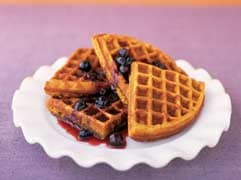
Scientists at NIST have teleported quantum information over a distance of more than 100 km, four times farther than the previous record (Credit: Shutterstock) A new record distance has been set for the quantum teleportation of information over optical fibers. Researchers working at the National Institute of Standards and Technology (NIST) claim to have transmitted the quantum information carried in light particles over 100 km (62 miles), four times farther thanpreviously achieved. Breakthroughs in quantum physics continue to accelerate, having already shown the practical potential of quantum cryptography and increasingly making progress toward powerful, everyday, quantum computers. This new record set by NIST adds to this momentum by providing the ability to transmit quantum state information much farther than previously thought practicable. According to the researchers, this capability was only possible through the advancement of NIST’s own bespoke single-photon detectors made in its laboratory in Colorado. Utilizing superconducting nanowires created from molybdenum silicide, these detectors are so sensitive that they can record the arrival of more than 80 percent of the photons transmitted, even after traveling more than 100 km – unboosted – down an optical fiber. "Only about 1 percent of photons make it all the way through 100 km of fiber," said NIST’s Marty Stevens. "We never could have done this experiment without these new detectors, which can measure this incredibly weak signal." 
In this particular experiment, the scientists used quantum states to indicate precisely when in an arrangement of time slots a single photon arrived. In this way, the information stored as a qubit (a quantum bit) was encoded as a sort of "timestamp". To do this, a single photon was emitted which then had two pathways to travel down. One was a short length and the other considerably longer. The path the photon traveled was completely random, however, and each path determined the time – "early" or "late" – at which the photon appeared. Because the state of the photons is entirely random, they could be in either of the two time states. If, as a result of the travel times, the photon is "in phase" where the superposition of states is the same, then the peaks of the waves will align and the signal will carry through. If, on the other hand, they are out of phase, then the peaks will align with the troughs of the wave, and they will effectively cancel each other out. The first step in the teleportation process is to generate a photon in a superposition of all possible states. It is then fired into a crystal splitter where the photon is cleaved into two entangled photons (which NIST dub "helper" and "output" photons). A second photon (randomly encoded with a "late" or "early" timestamp) is generated simultaneously and fired into a beam splitter exactly as the "helper" photon arrives. Two detectors at this point determine if the helper photon and the input photon are in or out of phase. Because the helper photon is entangled with the output photon, when the output photon reaches the end of its long journey down the optical fiber, it should arrive at the detector end mirroring the state of its entangled twin. In this way, the superposition of the entangled pair – in phase/out of phase can be determined to verify that the states have remained intact and the data of that state has been effectively transmitted. Prior to this research, a great deal of quantum information was lost in the fiber transmission medium, meaning that data transfer speeds and achievable distances were both low. Previous attempts to solve this problem sought the answer in such things as exceptionally complex quantum memory systems that could briefly store, and then re-transmit, quantum data without upsetting the finely-strung quantum spin states. The new teleportation method may, say the researchers, obviate the need for such storage systems by providing the long-sought ability to add a type of repeater/amplifier system into an optical network that would emulate those already used in current light communications systems. They also believe that this may one day help build a type of "quantum Internet" where vast numbers of these devices periodically resend data in order to almost infinitely extend such a network. The results of this research were recently published in the journal Optica. Source: NIST http://www.gizmag.com/scientists-break-distance-record-for-quantum-teleportation/39525 | 


